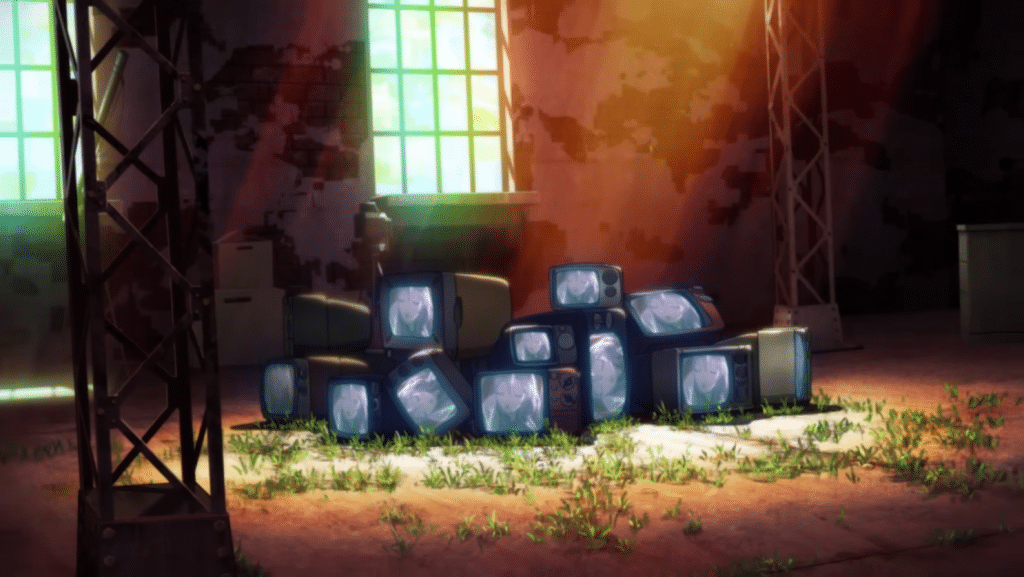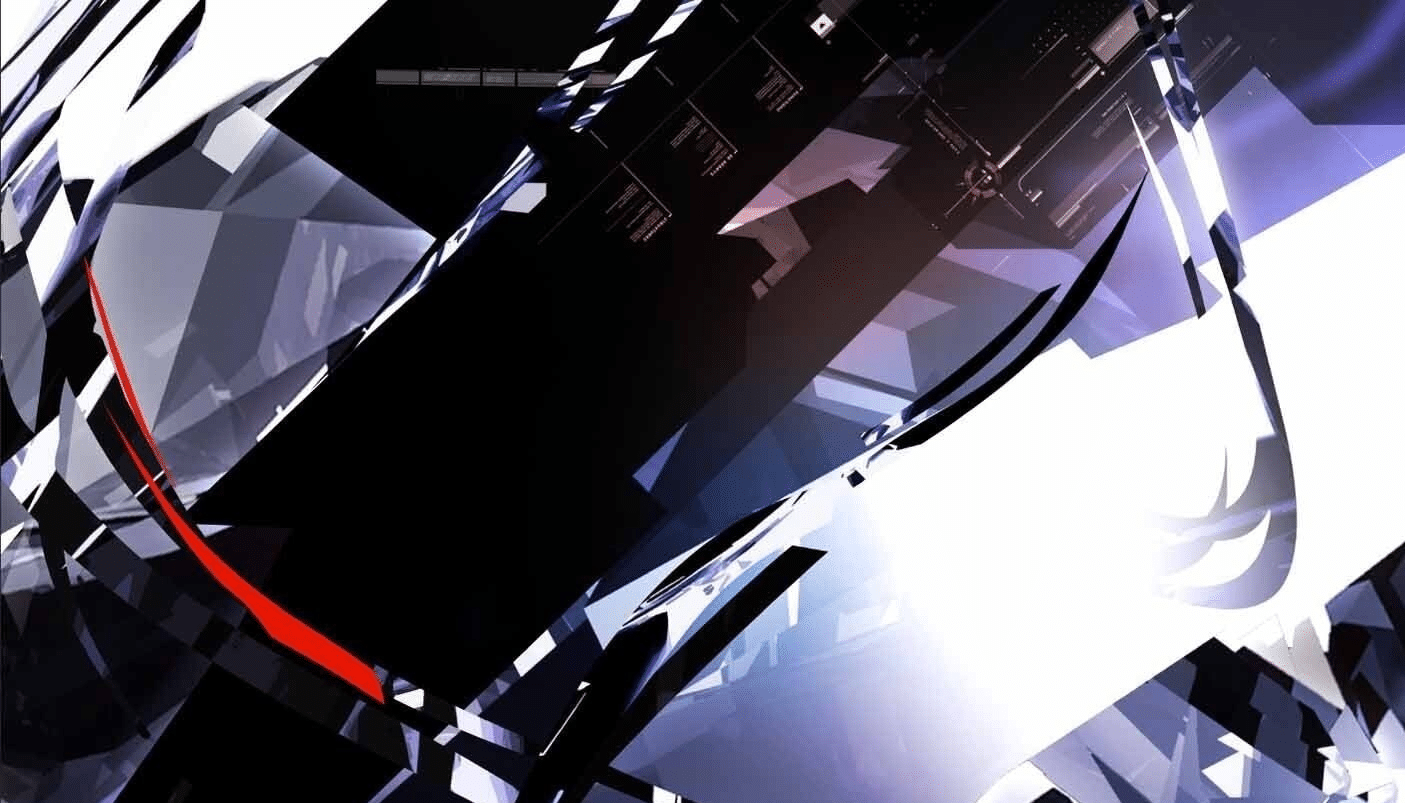Guilty Crown is available to stream on Hulu and on Funimation's website.
I appreciate Guilty Crown quite a lot.
I am also acutely aware that Guilty Crown is not a great show.
Its plot is a busy, haphazard mess. The characters are outlandishly over-designed (some brazenly feeding the male gaze). Even the title is kinda sorta really stupid. And its messaging, while well-meaning, falls flat as often as not.
Let's not even get into Episode 13, wherein a wheelchair-bound woman is painted as pitiable until she's magically granted functional legs – which are subsequently co-opted by the male hero anyway. Yikes.
So it's got its problems.
But that doesn't mean it didn't have a lot to give.
Sure, it wan't firing on all cylinders as a show, but it sure made a fantastic showcase for its core redeeming quality:
Pop Composition
And there's a point to using that phrase over the generic “music”. When you think about a TV show soundtrack, that creates a pretty specific idea in your mind. There’s probably some chart-radio tune over the opening credits, or maybe a moody tone-setting track if it’s a more self-serious show. After that, the actual score beneath most scenes can feel… generic.
Seriously, all respect to television composers; they’re usually given a few short weeks to create pieces in reaction to a concurrently-filming story. It’s hard. But it can result in one-size-fits-all movements rather than tailor-fit creations.
Luckily, anime has a few advantages here:
- Anime credits sequences are basically J-Pop music videos.
Western TV themes are often nothing to sneeze at – the openings to The Next Generation and Friends are nothing short of iconic – but they're just as often treated more as “necessary”. Just look at The Good Place, which reduces its entire opening theme to a one-bar stinger.
Anime openings tend to run long by comparison, the standard being a full ninety-second verse-bridge-chorus structure. That’s ninety seconds that, for the most part, the studio gets to re-use each week instead of producing new material. As you might have learned from Digi-volution and Sailor Moon’s transformation sequences, having recyclable material pays off. Literally. Hand-drawn animation is slow and expensive to produce second-for-second.
And if you’re going to be showing the same minute and a half every episode, you'll want to turn it into a real attraction. With any luck, it’ll even get channel-flippers to stick around for the actual show. So, naturally, studios invest in transforming that space into full-blown musical videos with vivid, surreal imagery.
Videos like Guilty Crown‘s second opening, The Everlasting Guilty Crown:
…which is what drew me to the show in the first dang place:
supercell Egoist
I make no bones about supercell being my favorite J-Pop band of all time. They've created some of the most iconic Vocaloid music ever, their debut single happens to be one of the all-time greatest anime ending themes (Monogatari‘s, obviously), and they have a killer catalog overall. So when I heard they would create all the vocal music around Guilty Crown, I was instantly on-board.
Instead, this proved a whizbang showcase of what Ryo could do with her career going forward, even beyond the radical range of the album Today is a Beautiful Day.
Rather than just showcasing supercell proper, Guilty Crown also saw the formation of Egoist, an offshoot act with the same composer and a new vocalist. The same sense of style was there, but there was a new, more technical sense of production around it – appropriate to an urban sci-fi show. The show's vocal tracks were even immediately and visibly covered by the late, great electronic-music duo Boom Boom Satellites.
Unfortunately, this would turn out to be one of supercell‘s last projects; they'd produce one more album after the show's release, in 2013, and then undergo radio silence for six years. Of the two singles they'd release in that stretch, one didn't even feature a human vocalist.
But the fact that supercell persisted at all while Egoist took off in a new, cyberpunk-light direction speaks to the strength of composer Ryo, who keeps producing slam-dunks to this day. You might have even heard them without knowing so; that other exception to supercell‘s dry spell? It comes from Ryo's stint as head musician for the “best-Final-Fantasy-game-of-the-2010s” series Bravely Default (noted favorite of one B.J. Keeton).
And that's just the vocal tracks. There's still the instrumental score to go, which is lifting a heavier weight:
Setting Tone
(Yikes, somebody relieve me of the Pun Gun.)
Anime does have another boon when it comes to its musical identity:
- TV animation generally takes longer to produce than live-action filming.
Which comes with its own host of problems, to be sure. But a silver lining is that the key design behind a series tends to get locked in really early. And, notably, composers have the time to create music that properly suits that design.
Which subsequently gave Hiroyuki Sawano plenty of space to play.
supercell was the initial hook, but Guilty Crown was my introduction – and many others' – to Hiroyuki Sawano. His heavily-produced, industrial style of sound would go on to feature in some of the most popular features of the decade – Kill la Kill, anyone? Gundam Unicorn? Promare? Attack on Titan?
By the way, JRPG afficianados have probably heart this guy's work, too – he's lead composer for Wii U headliner Xenoblade Chronicles X. This guy gets around. And for good reason:
He can really set a mood.
Even if Guilty Crown is more aesthetically Cyberpunk-y rather than “proper” anti-corporate Cyberpunk, Sawano manages to set the same mood with his rhythm-heavy, often-ethereal, tech-forward style. Even divorced of context, his work on Guilty Crown is just a darned compelling score. Back in the tail years of college, I was acutely aware that one of my friends got heavily into the series' music despite hardly watching more of it than the three-minute samples he would catch in the time it took him to make a sandwich in the adjacent kitchen.
Lucky him.

Parts > Whole
It's no mistake that I just spent easily five times as long gushing over the composers behind Guilty Crown as I did grousing about its faults.
Yeah, I was disappointed in the show at the time. It took a perfectly compelling concept and squandered it on a shakily-written script. But that's something you can at least make fun of in retrospect, and you never have to go back to it in full.
The best part of stories that succeeds in very specific ways is: those specific ways can often be extracted. You can absorb the delightful artwork behind Final Fantasy XII even if its Gambit System wasn't your speed, and you could make an argument for a super-cut of the Star Wars prequels' fight scenes being the best version of those films.
And the most easily-extractable element is arguably the music. It's a whole layer of the work that can be pulled and played back completely out of context. The opening My Dearest and ending Kokuhaku stand on their own as charting pop-music hits (albeit bolstered by recognition from the show), and Sawano's score is playing in my headphones right now with none of the show's other sound or dialogue to trample over it.
If a messy, less-than-effective show is what it took for me to follow a band post-breakup and discover a new favorite composer? Great!
Those things all support each other within that specific context, sure. But they also have their own life beyond that.
Getting them all together was, in some ways, just a showcase. The real value is finding something worth following out the door.

